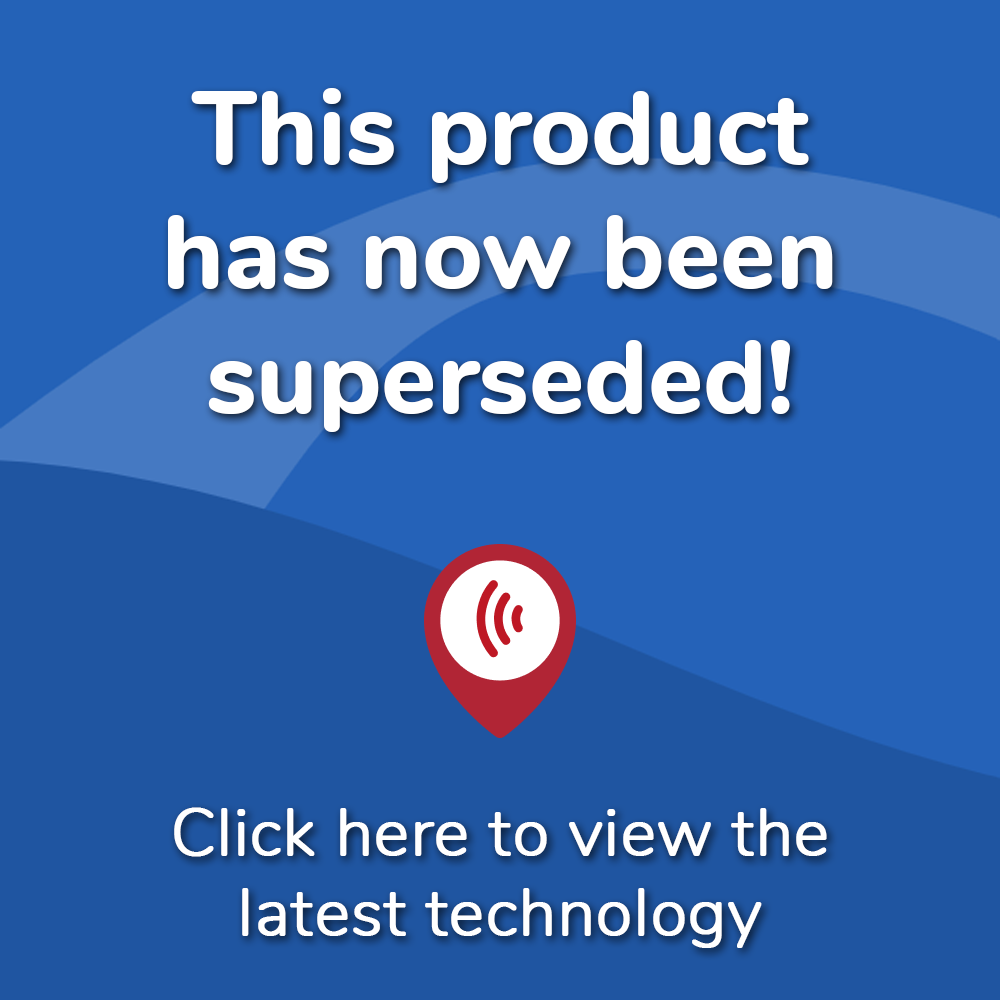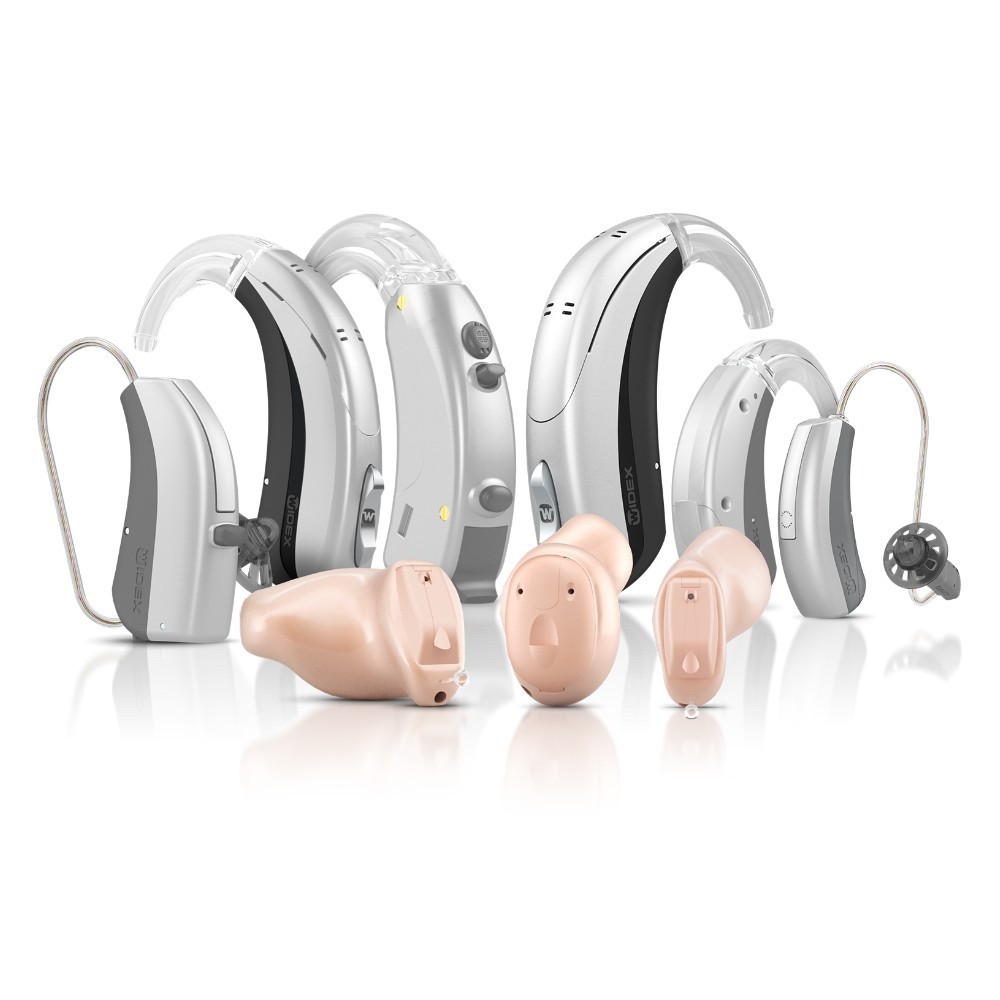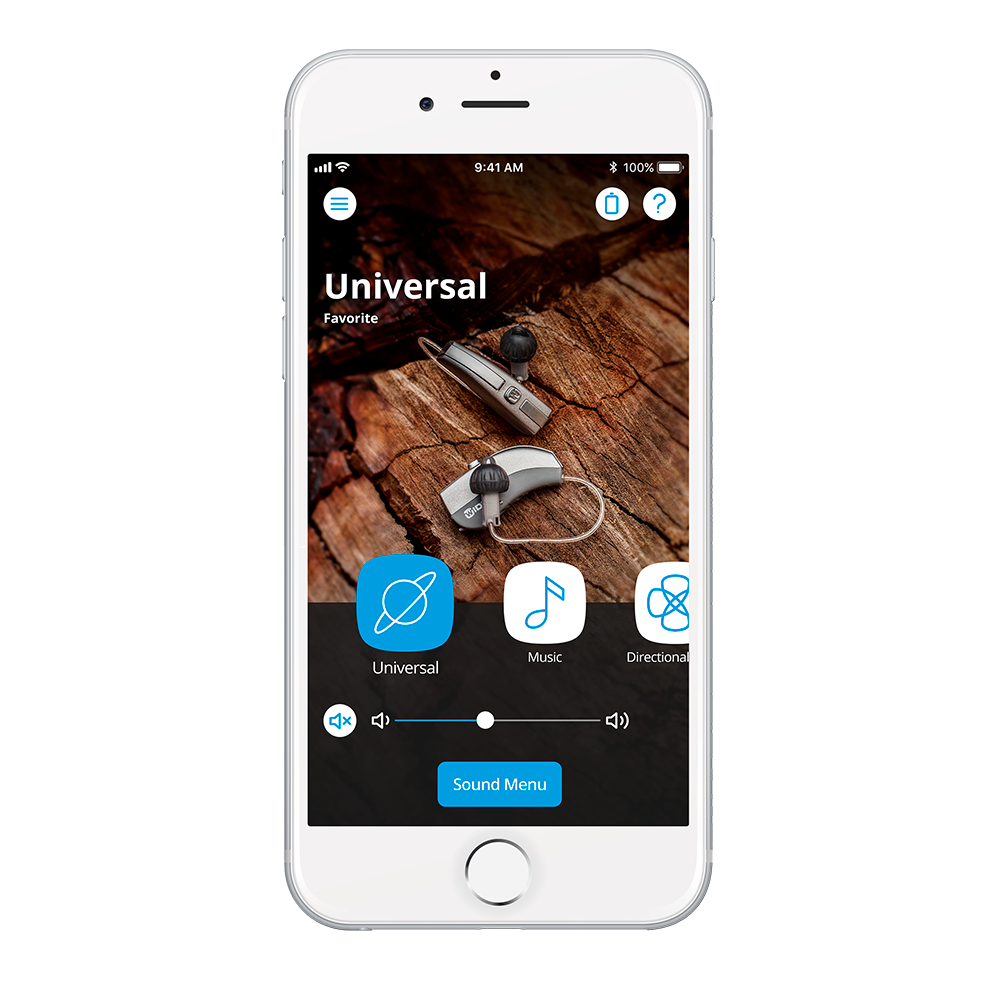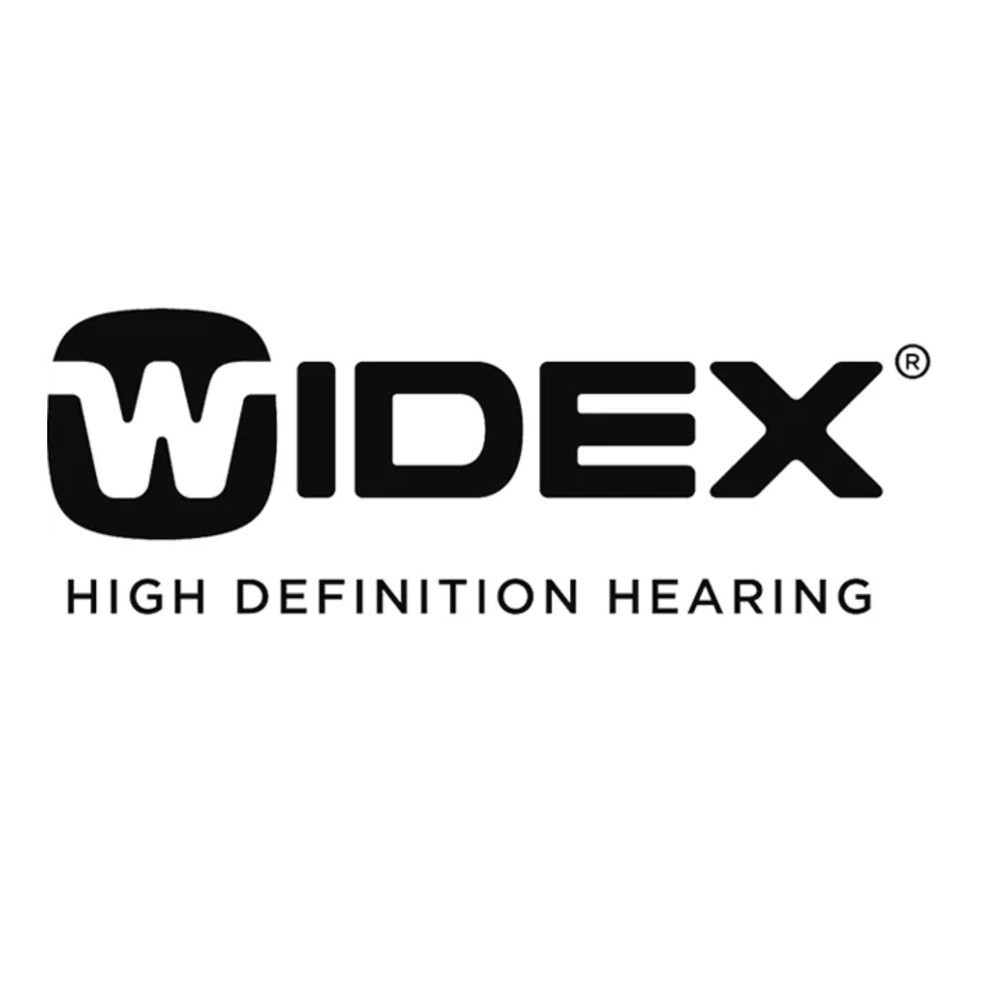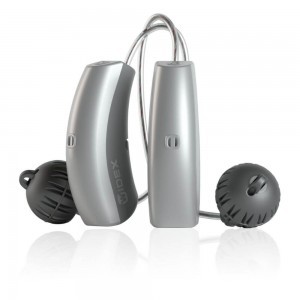WARNING Superseded Product Newer Widex Models Available

What's included in our hearing aid prices?
Details & Features
Widex Evoke 440 Hearing Aids
Widex Evoke 440 Hearing Aids Including - RIC 10 / RIC 312 D
2020 Update: This hearing aid range has now been superseded by the Widex Moment range.
Introduction to Widex Evoke 440 hearing aids
The Widex Evoke 440 hearing aid is the top model in the 2018 line of hearing aids from Danish manufacturer Widex.
The Evoke features an all-new chipset, which we are quite excited about as this moves away from the hardware that was in their “Beyond” and “Unique” platforms, neither of which were terribly well received. Widex Evoke 440 hearing aids is available in every physical style.
The more popular models are likely to be the “Passion” which is very small behind the ear instrument and the “Fusion2” which is larger but has better connectivity. We are also pleased that the full range of custom in-ear options are available right from launch.
Styles available in the Widex Evoke 440 hearing aids:
- RIC 10, RIC 312 D, Passion, Fusion, Fusion 2
- BTE 13 D, BTE Fashion, BTE Fashion Mini, BTE Fashion Power
- ITE, ITE XP, CIC, CIC-M
Main features of the Widex Evoke 440 hearing aids
Machine learning
If you’ve been recently recommended an Evoke by another company then you are likely a bit confused. There is a new feature called “machine learning” and we are receiving daily calls from people who are unsure as to what this actually is as it seems that some hearing aid dispensers are having a bit of trouble explaining it.
We contacted Widex for help unravelling it and their head technical person kindly took the time to type up an explanation for us in simple terms (see below) and frankly, it’s a far more beneficial feature than we had first imagined, as long as you don’t mind being quite hands on with the hearing aid phone app in order to help get the very best out of your hearing aids.
The Widex Evoke is the first hearing aid to feature machine learning technology. As with all things new, machine learning requires a bit of explaining to fully comprehend how it works and what it can mean for you.
How can machine learning improve hearing aid performance?
Essentially, the Evoke uses real time machine learning technology to allow users to tell it what they like in any given auditory situation, remember their preferences and automatically adapt, to provide a truly personalised hearing experience for each individual user.
We are not talking about standard ‘automatic’ technology here. Most modern hearing aids can detect your auditory environment and automatically approximate the ideal setting, based on an assumption about what a user might want to hear in a given listening situation. However, the Evoke learns from information provided by the user, and uses this data to find the perfect settings for each individual’s own auditory intention in every listening situation.
Widex Evoke 440 hearing aids also automatically gather anonymous data from every Evoke user around the world so that the system can continually learn about widespread preferences, so that over time, further improvements can be made to sound quality through firmware updates. Because it works in real time,
Evoke users can accurately adjust their device to their perfect settings for each environment as soon as a difficult listening situation arises, rather than having to try to recall the details to their audiologist days or weeks later.
These preferences are saved in a specific program (favourite program), so the next time you are in the same environment, you can re-use it and optimise again. All of this means that a user wearing EVOKE, who doesn’t have to think so much about choosing the right program and setting in any given listening situation, can spend more of their cognitive resources on the actual task of listening.
How does Machine learning work in the Evoke?
The machine learning element of the Evoke is powered through the smartphone app – using the computational power of the phones to run the complicated algorithms required. The app also provides the convenience of simple and smart controls which can discreetly go wherever the user goes.
Machine learning may be complicated, but the EVOKE is wonderfully simple to use. The app asks users to listen to two sound settings – A and B – and then chose which they prefer. Based on the user’s input, Evoke predicts the users preferences and suggests a new setting, which is perceived to be the optimal setting for that user.
When this is done over and again, the systems begin to learn what the user’s individual preferences are, and then uses this knowledge to predict user’s preferences in similar environments. After the completion of 15-20 comparisons, the Evoke machine learning algorithm has performed something equivalent to more than 2 million manual comparisons, which would be impossible for any user. This allows the Evoke to find the absolute perfect setting, for every individual, in every auditory situation.
Fluid Sound Controller
It’s not only it’s machine learning capabilities that make the Evoke stand out though. The fluid sound controller, which controls the automatic processing, is faster and more accurate than ever before. It features new, more specific sound classes, new programs and improved sound rationales.
There are now also more options to tailor the sound via the Fluid Sound Controller – if you don’t want to amplify noise in noisy situations you can make the fast compression system work in favour of this – now you can reduce or completely turn off the fast compression in ‘noisy classes’, except when it might be useful to leave it on to have access to these sounds for safety reasons.
The improved sound rationales of the Evoke deliver a listening experience so superior that both new and previous Widex Hearing aid users will notice the difference. Hearing becomes more effortless and natural.
Fluid Sound Analyser
The Evoke intuitively analyses your sound environment and prioritises the most important sound sources using its unique fluid sound analyser. This has had TWICE as much training as the previous Widex classifier, so the Evoke is able to map out the environment more accurately than ever to select the correct sound class.
Other features of the Widex Evoke 440 hearing aids
- Rechargeable
The Evoke is compatible with the popular Z-power rechargeable system. Again, only for the Fusion 2 models.
- Sound classes
These are the various scenario’s that the “automatic” setting will move between, depending on what environment you are in. The better the model of Evoke, the more sound classes it has. The Evoke 440 has 11. There are two new classes this time around, a second music setting which is welcome and a “social” setting, which we can’t see as being much different to “Party with Speech”.
Other performance levels in the Widex Evoke hearing aid range:
Widex Evoke 330 hearing aids
Widex Evoke 220 hearing aids
Widex Evoke 110 hearing aids
Want more support with Widex Evoke 440 hearing aids?
If you would like more support with this hearing aid range or have any other queries regarding hearing aids and hearing healthcare - call us free on 0800 567 7621
**Please note, there will be an additional surcharge of £125 if we are pairing a single hearing aid with an existing aid bought from another company where we are taking over the aftercare responsibilities and looking after both hearing aids.
Widex has two different smartphone apps. The “Evoke” app is needed for machine learning, not the “Tonelink” app. The “Evoke” app only works with the “Fusion2” shape of the Evoke, which means that the machine learning aspect is not available in the “Passion”, “Fashion”. “Power” or the custom in-ear models.
Paul Harrison is an audiology expert at Hearing Aid UK, with over 20 years of audiology experience and a member of the British Society of Hearing Aid Audiologists Council (BSHAA) between 2015 - 2020.
Widex Evoke 440 hearing aids prices and more
Watch the Widex Evoke 440 Hearing Aid Video Below
Widex Evoke 440 Hearing Aids Information
Click on the buttons below to discover moreOur specialist service includes:
Do not spend hundreds of pounds without getting a second opinion from us.
Please call us on 0800 567 7621
 Not only are the prices great, but the service is fantastic! Many thanks to your team.
Not only are the prices great, but the service is fantastic! Many thanks to your team.What's included in our hearing aid prices?
If you are looking at this page then it is likely that an audiologist has suggested that you purchase this particular hearing aid, so is this the best model for you?
In general, any audiologist will always recommend to you the model that best suits your needs. Here is a useful checklist to make sure that is the case.
- Audiologist level of knowledge: The audiologist you have seen will hopefully have a wide knowledge of all available hearing aids, however, some will only be familiar with a small number of brands and therefore may not really be in a position to know which model is the best for you. It is OK to challenge their recommendation and ask them to justify why this particular brand is the one for you.
- Do research: Read about the hearing aid that was recommended. Does it seem like it will suit your lifestyle? Does it have more or fewer features than you need?
- Be aware of sales targets: Many high street retailers have specific tie-ins to a particular manufacturer/brand. The hearing aid they have suggested may still be the correct one for you, but do your research so that you know why they might have recommended it.
If in doubt, feel free to give us a call. That's what we're here for. In the meantime, read all about our review of the best hearing aids for 2025 here
If you have significant hearing loss in both ears, you should be wearing two hearing aids. Here are the audiological reasons why:
Localisation: The brain decodes information from both ears and compares and contrasts them. By analysing the minuscule time delays as well as the difference in the loudness of each sound reaching the ears, the person is able to accurately locate a sound source. Simply put, if you have better hearing on one side than the other, you can't accurately tell what direction sounds are coming from.
Less amplification is required: A phenomenon known as “binaural summation” means that the hearing aids can be set at a lower and more natural volume setting than if you wore only one hearing aid.
Head shadow effect: High frequencies, the part of your hearing that gives clarity and meaning to speech sounds, cannot bend around your head. Only low frequencies can. Therefore if someone is talking on your unaided side you are likely to hear that they are speaking, but be unable to tell what they have said.
Noise reduction: The brain has its own built-in noise reduction which is only really effective when it is receiving information from both ears. If only one ear is aided, even with the best hearing aid in the world, it will be difficult for you to hear in background noise as your brain is trying to retain all of the sounds (including background noise) rather than filtering it out.
Sound quality: We are designed to hear in stereo. Only hearing from one side sounds a lot less natural to us.
Fancy some further reading on this topic? You can read about why two hearing aids are better than one in our article, hearing aids for both ears, here
Other Models
Ask the Experts
6 Morton Lane
Walkwood
Redditch
Worcestershire
B97 5QA
Latest Launch
When we refer to a product as 'Latest Launch', we mean it is the latest to be released on the market.
New
When we refer to a product as 'New', we mean that the product is the newest hearing aid model on the market.
When we refer to a product as 'Superseded', we mean that there is a newer range available which replaces and improves on this product.
Older Model
When we refer to a product as an 'Older Model', we mean that it is has been superseded by at least two more recent hearing aid ranges.


